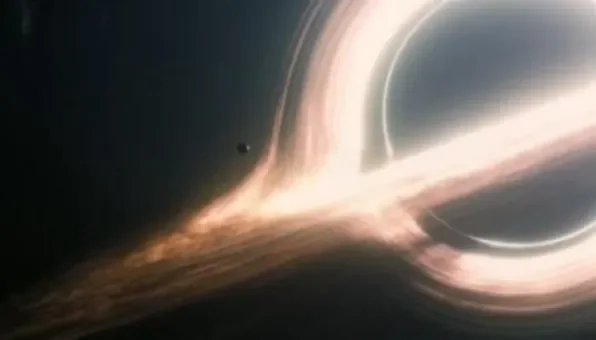- Joined
- Mar 7, 2019
- Messages
- 102,358
- Reaction score
- 34,841
- Points
- 138
- Age
- 29

Scientists finally discover what's inside a black hole
Physicist Enrico Rinaldi used quantum computing and computer learning to describe what is believed to be the interior of a black hole.
What lies at the center of a black hole? A team of scientists led by Enrico Rinaldi, an American physicist at the University of Michigan, has utilized quantum computing and computer learning to decipher the mathematical description of the quantum state of the matrix model, shedding light on what may lie inside a black hole.
The study was based on the holographic principle, which postulates that the two fundamental theories of particles and gravity are equivalent to one another. However, the challenge lies in the fact that these ideas are constructed in different dimensions.
Two theories offer explanations for different dimensions, with only one distinction between them. Gravity exists in three dimensions within a black hole's geometry, whereas particle physics resides on its surface in two dimensions, similar to a flat disk.
A black hole's massive mass distorts space-time, creating its gravity that operates in three dimensions. This gravity links mathematically to the particles gyrating above the black hole in two dimensions. Therefore, while a black hole occupies three-dimensional space, it appears to observers as a projection of particles.
According to some scientists, our entire universe could be a holographic depiction of particles, which might provide a consistent quantum explanation of gravity. Enrico Rinaldi explains that in Einstein's General Relativity theory, there are no particles, only space-time, while in the Standard Model of particle physics, there are no gravitational forces, only particles. Bridging these two theories has been a persistent challenge in physics for decades.
A recent study by Rinaldi and his colleagues, published in the journal PRX Quantum, explores the use of quantum computing and deep learning to investigate holographic duality. Their research focuses on determining the lowest energy state of quantum matrix models, which are mathematical problems that can help probe the nature of this duality.
The use of quantum matrix models represents the particle theory. According to holographic duality, the mathematical events that occur in a system representing particle theory can also impact a system representing gravity. Thus, by solving a quantum matrix model, one could gain insights into gravity-related phenomena.
Rinaldi and his colleagues have utilized two matrix models, which are relatively uncomplicated to solve through conventional means but possess all of the attributes of more complex matrix models employed to describe black holes using holographic duality.
“We hope that by understanding the properties of this particle theory through the numerical experiments, we understand something about gravity,” adds Rinaldi. “Unfortunately it’s still not easy to solve the particle theories. And that’s where the computers can help us.”
In string theory, objects are represented by numerical matrix models, where one-dimensional strings correspond to particles in particle theory. The focus of researchers is to determine the specific arrangement of particles in the ground state, the lowest energy state of the system, by solving these matrix models. Unless something is added to the system that causes it to be perturbed, it remains unchanged in its natural state.
“It’s really important to understand what this ground state looks like, because then you can create things from it,” Rinaldi says. “So for a material, knowing the ground state is like knowing, for example, if it’s a conductor, or if it’s a super conductor, or if it’s really strong, or if it’s weak. But finding this ground state among all the possible states is quite a difficult task. That’s why we are using these numerical methods.” [Continued in Article]
































